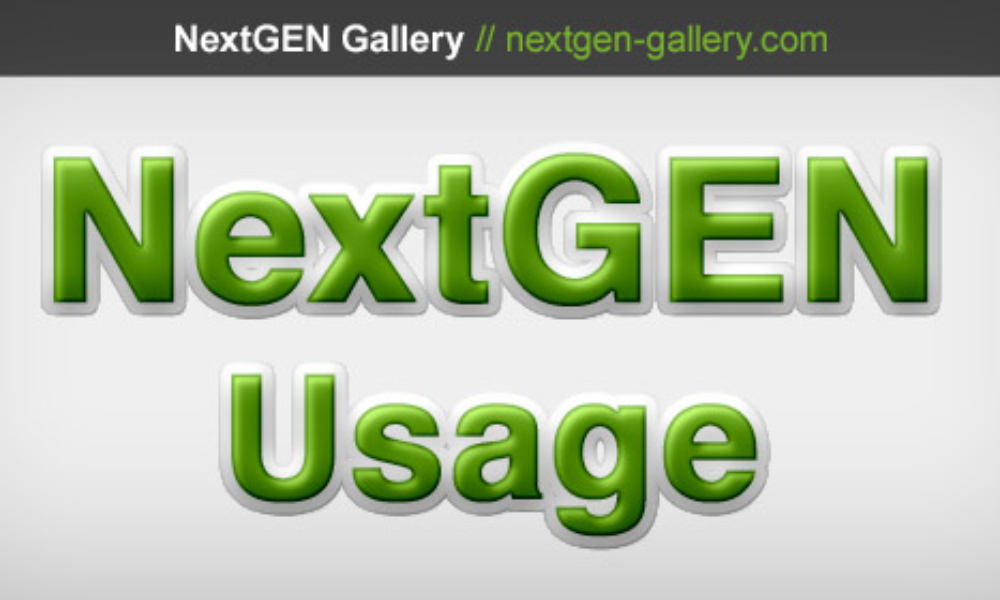 There are so many WordPress plugins available which can compress your images on your website.
There are so many WordPress plugins available which can compress your images on your website.
Most of the plugins do compression during upload and include an option for bulk compression after upload.
Some of the plugins include:
Each of them works with the WordPress Media Library, but some of them extend to NextGEN Gallery as well. For example, Imagify, WP Smush Pro, and EWWW will compress NextGEN Gallery images.
Some of the plugins require connecting via an API key, so the compression is done through a third party server. Others, like EWWW work on your server, running your server's resources.
Both methods have upsides and downsides. When using an external server, it means your website will remain running at a nice speed while the compression is happening. It also reduces the risk of resource overload which can lead to site crashes. Compressing with your server means uploads should be done faster because there is no sending and receiving of image files to an external location.
The downside of either method is the risk of metadata loss, image corruption, image loss, over compression and upload slowness.
Although we have tested many of the compression plugins and services available, these downsides are why we recommend optimizing the file size of your images before uploading.
For offline compression, we recommend using two apps; JPEGMini and ImageOptim. The reason for two is because JPEGMini does not compress GIF or PNG files. However, it is the best software for compressing JPG images.
There are multiple advantages of optimizing your images offline. Some of this include:
- No strain on the server, whatsoever.
- You can incorporate compression into your normal workflow.
- No need to worry about backing up your images online, since they're already backed up offline (hopefully you're doing that).
- JPEGMini optimization is amazing, fast and seamlessly integrated with Lightroom and Photoshop. (Pro version has the integration)
If you haven't already looked at JPEGMini, we encourage you to do so. Reducing your image file sizes is important for SEO and site retention. But compressing them and maintaining image quality is essential to quality site design and visitor enjoyment.
As of February 14, 2018, Imagely officially recommends Imagify for compressing images using a WordPress plugin. Learn more about the Imagify integration here.



Sallie Goetsch
2 Jul 2016There is a simple one-word justification for installing image-compression plugins: CLIENTS. None of my clients is going to go through all the steps required for compressing images before uploading them. I’m lucky if I can get them not to upload 10-megapixel photos directly from their cameras.
Scott Wyden Kivowitz
5 Jul 2016Our recommendation would be very different between photographers and developers creating sites for clients. For clients who do not understand offline optimization, we agree a plugin can make it easier. But photographers who have workflows already can do it offline which is more efficient.
Ioana Radian
5 Jan 2018Compressing images offline seems awfully time consuming for anyone, unless there are large batches of final photographs for products. If we have several similar images, we may try and see which look best on the site and it’s so much easier to decide on the photos and then compress on the fly those that are needed.
That being said, even with a plugin one might still run into the problem of not being able to optimise images that aren’t in the Media Library, I’m experiencing it now with Imagify (it’s how I landed here, looking for a solution). I was happy with Imagify, but discovered I couldn’t optimise the user-uploaded images on https://boardappointments.co.uk/profiles/, because they live in a Gravity Forms folder…
But it’s curious you mention metadata loss as a downside, because metadata takes space and is normally useless to anyone except the photographer. It’s important to have the metadata offline, but I see no reason why it should be online. Even if it is a photographer’s website (or a painter’s website, like my mother’s).
Scott Wyden Kivowitz
5 Jan 2018I answered your question in the other post’s comment.
Jeffrey McPheeters
6 Jul 2016I use JPEGmini Pro precisely because I can automate all my export presets to use JPEGmini’s compression without having to make it a separate step and whether working in LR or PS, I don’t have to worry an image is going to be ‘recompressed’. It’s a no brainer for this photographer.
Mark Gason
12 Sep 2016I downloaded JPEGmini and ran it on the maximum 200 images for free demo. I then ran a batch process in Adobe Fireworks on another original copy of the same images. I set it to reduce to 70% quality. In my experience at 70% or above people just looking at a website will not notice any quality loss. Now if you are into fine art photography that may be too high a compression for you, but it is really still very nice quality. My results may be unique for some reason but here they are.
Original 200 Files in a folder
42,540,485 bytes (43 MB on disk)
Compressed by JPEGmini
21,448,145 bytes (21.9 MB on disk)
Compressed by Adobe Fireworks at 70% quality
1,562,739 bytes (12 MB on disk)
ADDITIONAL TEST Adobe Fireworks at 80% quality
15,956,460 bytes (16.4 MB on disk)
I would say that the Fireworks images were very slightly less clean than the JPEGmini ones but the difference was small and the saving huge. Sadly I can not post examples. Maybe I need to write a blog post and put some online.
I added a test after comparing the JPEGmini and Fireworks 70% test. Fireworks at 80%. JPEGmini still looked ever so slightly better, especially in skin areas. In others it was not noticeable. I did have to really look for issues. So what sort of compression you use will be heavily reliant on what the type of website. For our retail site 70% is totally OK for garment shots etc. It is always a trade off quality and download speed. In retail it has to look good enough for someone to buy but download fast enough that the customer does not leave before seeing the product. Fireworks 70% is fine for that I think. You may differ.
Scott Wyden Kivowitz
13 Sep 2016Nice data there. Please keep in mind that the compression is not only about the look of the image, or the file size. For photographers, it’s about both – ideally, quality looking images with a small file size.
auku
2 Oct 2016Image compression can be a tricky issue.
PingSunday
17 Oct 2018Now, I’m using Imagify for WordPress. Which is quick and easy.
Kenneth Huey
7 Dec 2018When you say “we recommend using two apps; JPEGMini and ImageOptim. The reason for two is because JPEGMini does not compress GIF or PNG files,” that seems to suggest that you recommend JPEGmini for JPEGs and ImageOptim for GIFs and PNGs. But ImageOptim works on JPEGs, too. In fact, the best offline optimization I’ve found is to Save For Web in Photoshop, run that JPEG thru JPEGmini, and then run it thru ImageOptim. Does that seem kosher to you?
Scott Wyden Kivowitz
7 Dec 2018It really depends on what you want from the final image. If you want highly compressed and do not care about lost visual quality, then using both apps can serve you well. But if you want compression with no visual quality loss, then JPEGMini alone is the ideal approach.
Chad
13 Jul 2019I use JPEGmini and ImageOptim and have done so for years. They’re both great. But you’ve missed a huge issue when trying to use them for WordPress sites: derivative thumbnails. And those are the ones that are most often actually displayed on the page on most sites (yes, I know it’s possible to use original versions–most sites don’t do that though, and it locks you in with display sizes and themes and site speed optimization). They’re created automatically by WordPress as part of the upload process, and some plugins (such as WP Retina 2x) create further derivate versions.
If you optimize before uploading, those derivatives aren’t optimized because they haven’t been created yet. So you’re missing out on the most commonly displayed image versions. In other words, for practical purposes your images aren’t actually optimized.
Optimizing before uploading does (or can) strip out the metadata, and that’s a good start, but the derivative versions can still often be massively optimized beyond that.
Scott Wyden Kivowitz
15 Jul 2019JPEGMini doesn’t strip metadata and ImageOptim, metadata stripping can be disabled.
Alex Florescu
17 Jul 2019Scott, thanks for mentioning ShortPixel in your article first of all! 🙂
One correction though: “For example, Imagify, WP Smush Pro, and EWWW will compress NextGEN Gallery images.” – Please note that ShortPixel Image Optimizer also compresses NextGEN and any other non-media-library images as well.
Also please note that we have a new image optimization plugin that you may want to have a look at:
https://wordpress.org/plugins/shortpixel-adaptive-images/
Scott Wyden Kivowitz
18 Jul 2019Hi Alex,
Feel free to send email us about your integration. We’d love to hear how deeply it’s integrated.
partog
12 Jan 2020Imagify is quick and easy.